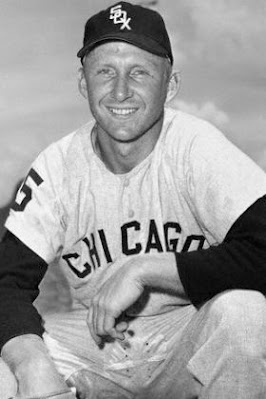 |
| TONY ESPOSITO |
The people listed below each played a part in making Chicago the greatest sports town in the world. They will be missed.
 |
| STAN ALBECK |
Stan Albeck, 89, Bulls head coach 1985-1986; Bradley University men’s basketball head coach 1986-1991 (March 25).
Joe
Altobelli, 88, Cubs manager 1991 (March 3).
 |
| LOU ANGOTTI |
Lou Angotti, 83, Blackhawks center/right wing 1965-1967, 1969-1973; Chicago Cougars (WHA) center 1974-1975 (September 16).
 |
| LIONEL ANTOINE |
Lionel Antoine, 71, Bears tackle 1972-1978, selected third overall in 1972 NFL draft (December 14).
Jon
Arnett, 85, Bears halfback/end 1964-1966 (January 16).
Art
Anderson, 84, Bears offensive tackle 1961-1962 (February 25).
 |
| RALPH BACKSTROM |
Ralph Backstrom, 83, Blackhawks center 1972-1973; Chicago Cougars (WHA) center 1973-1975, co-owner 1974-1975 (February 7).
Hal
Breeden, 76, Cubs first baseman 1971 (May 3).
Hy
Cohen, 90, Cubs pitcher 1955 (February 4).
 |
| JOE CUNNINGHAM |
Joe Cunningham, 89, White Sox first baseman/outfielder 1962-1964 (March 25).
Ralph Davis, 82, Chicago Packers (NBA) guard 1961-1962 (May 30).
Jeff Dickerson, 43, Bears reporter for ESPN Radio 2001-2021 and ESPN.com 2009-2021 (December 28).
Solly
Drake, 90, Cubs outfielder 1956 (August 18).
 |
| TONY ESPOSITO |
Tony Esposito, 78, Blackhawks goalie 1969-1984, five-time All-Star, three-time Vezina Trophy winner as outstanding goalie in NHL, Calder Trophy winner as NHL rookie of the year 1970, elected to Hockey Hall of Fame in 1988, sweater number 35 retired by Blackhawks in 1988, named among 100 greatest hockey players of all time in 2017, ranked by hockey-reference.com as the greatest player in Blackhawks history (August 10).
Howie
Glover, 86, Blackhawks right wing 1958-1959 (June 15).
Johnny
Groth, 95, White Sox outfielder 1954-1955 (August 7).
Shaler
Halimon, 76, Bulls guard 1969-1971 (April 19).
Joe Hardy, 75, Chicago Cougars (WHA) center 1973-1975 (February 19).
 |
| JERRY HARKNESS |
Jerry Harkness, 81, Loyola University men’s basketball point guard, 1960-1963, captain of 1963 NCAA championship team, first-team All-American 1963, uniform number 15 retired in 1991, inducted into the College Basketball Hall of Fame with his Loyola teammates in 2013 (August 24).
Chuck
Hartenstein, 79, Cubs pitcher 1966-1968 (October 2).
Geno
Hayes, 33, Bears linebacker 2012 (April 26).
Jimmy
Hayes, 31, Blackhawks right wing 2011-2013 (August 23).
 |
| ROLAND HEMOND |
Roland Hemond, 92, White Sox general manager 1970-1985, senior vice president 2001-2007, The Sporting News Major League Executive of the Year 1972; founded Arizona Fall League 1992; recipient of Buck O’Neil Lifetime Achievement Award from National Baseball Hall of Fame 2011 (December 12).
 |
| LaMARR HOYT |
LaMarr Hoyt, 66, White Sox pitcher 1979-1984, American League Cy Young Award 1983, led American League in wins 1982 and 1983 (November 29).
Doug
Jones, 64, Cubs pitcher 1996 (November 22).
Don
Kojis, 82, Bulls forward 1966-67, started first game in franchise history on
October 15, 1966 (November 19).
 |
| ROGER LeCLERC |
Roger LeClerc, 84, Bears placekicker and linebacker 1960-1966, member of 1963 world championship team (January 21).
Cyril
Pinder, 74, Bears running back 1971-1972 (January 23).
 |
| JUAN PIZARRO |
Juan Pizarro, 84, White Sox pitcher 1961-1966, All-Star 1963-1964; Cubs pitcher 1970-1973 (February 18).
Ken
Reitz, 69, Cubs third baseman 1981 (March 31).
John Roach, 87, Chicago Cardinals quarterback/defensive back 1956, 1959 (February 18).
 |
| EDDIE ROBINSON |
Eddie Robinson, 100, White Sox first baseman 1950-1952, All-Star 1951-1952 (October 4).
Bobby
Schmautz, Blackhawks right wing 1967-1969 (March 28).
Tom
Simpson, 93, Cubs pitcher 1953 (February 7).
Fred
Stanfield, 77, Blackhawks center/wing 1964-1967 (September 13).
Wayne
Terwilliger, 95, Cubs second baseman 1949-1951 (February 3).
 |
| DICK TIDROW |
Dick Tidrow, 74, Cubs pitcher 1979-1982; White Sox pitcher 1983 (July 10).
Vito
Valentinetti, 92, White Sox pitcher 1954; Cubs pitcher 1956-1957 (August 5).
Granville
Waiters, 60, Bulls center 1986-1988 (March 23).
Check out our book Heydays: Great Stories in Chicago Sports on Amazon.







